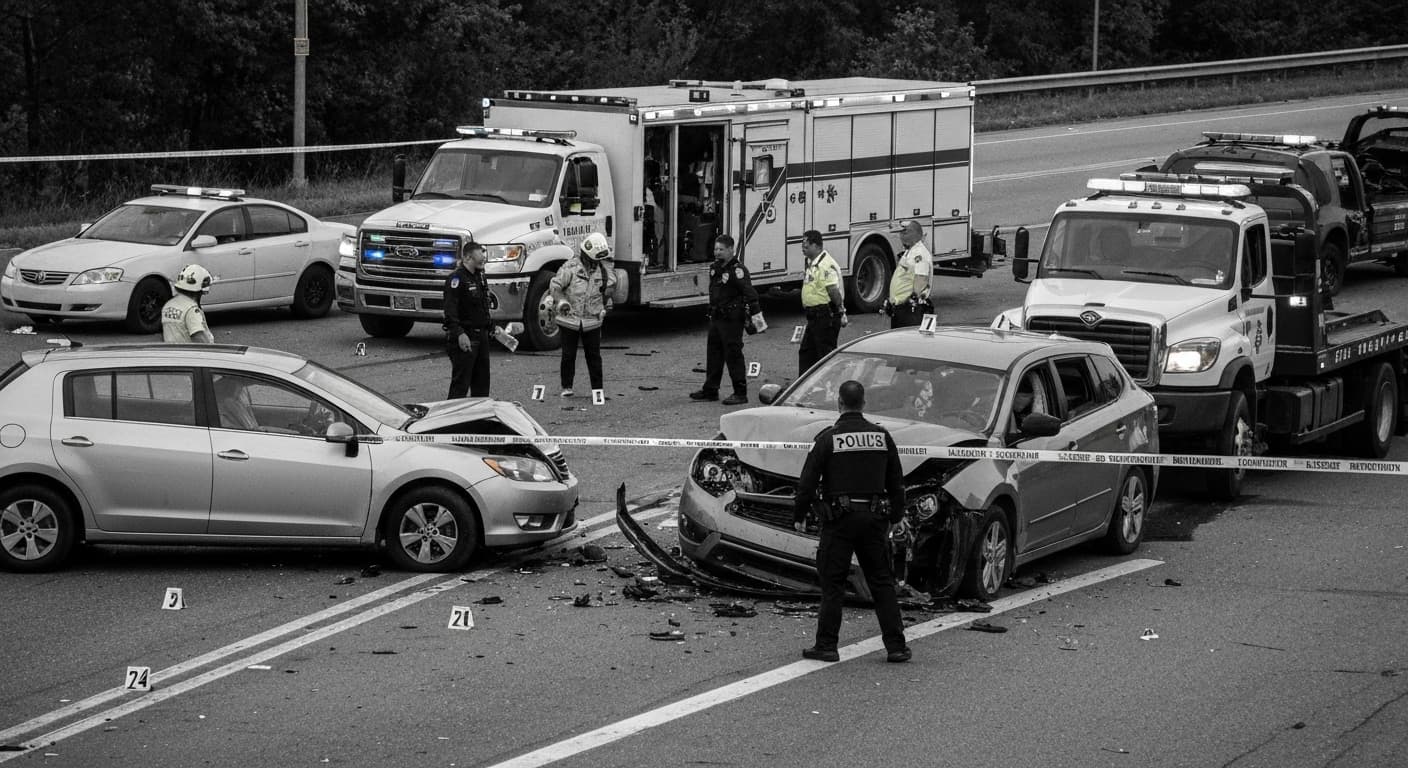
What's the First Step After Being Involved in a Car Collision?
Learn the critical first step after a car collision: ensuring safety for everyone involved and securing the accident scene.
# What's the First Step After Being Involved in a Car Collision?
The very first step after a car collision is to ensure safety - both yours and others involved. This means staying calm, assessing the immediate situation, and taking action to prevent further harm.
Step 1: Stay Calm and Assess Safety
Take a Deep Breath
- Don't panic or act impulsively
- Take a moment to collect yourself
- Focus on immediate priorities
- Think clearly about next steps
Quick Safety Check
Ask Yourself:
- Am I injured?
- Are my passengers injured?
- Is my vehicle safe?
- Are we blocking traffic?
- Is there immediate danger?
Immediate Dangers to Watch For
- Oncoming traffic
- Fire or smoke
- Fuel leaks
- Electrical hazards
- Unstable vehicles
- Broken glass
If You're Injured
Don't Move If:
- You have severe pain
- You suspect spinal injuries
- You're dizzy or disoriented
- Moving increases pain
- You feel numbness or tingling
Call 911 Immediately For:
- Any injuries, no matter how minor
- Unconscious passengers
- Severe pain
- Bleeding
- Difficulty breathing
- Head or neck injuries
Stay Put and Wait
- Don't attempt to move
- Keep others from moving you
- Stay conscious and alert
- Provide information to responders
If You're Not Seriously Injured
Check Passengers First
- Ask if anyone is hurt
- Look for obvious injuries
- Don't move injured passengers
- Call 911 if anyone needs help
Assess Vehicle Safety
Check For:
- Ability to start and move
- Steering control
- Brake function
- Lights working
- Structural damage
Move to Safety If Possible
- Pull to roadside or shoulder
- Get out of traffic lanes
- Turn on hazard lights
- Exit vehicle carefully
Securing the Accident Scene
Make Yourself Visible
- Turn on hazard lights immediately
- Use flares or reflective triangles
- Wear bright clothing if available
- Stand away from traffic
Control Traffic
- Set up warning devices
- Alert oncoming drivers
- Direct traffic if necessary
- Keep others safe
Turn Off Engines
- Reduce fire risk
- Set parking brakes
- Turn off electrical systems
- Check for fuel leaks
When to Call 911
Always Call For:
- Any injuries
- Significant property damage
- Blocked traffic
- Suspected impaired drivers
- Hit-and-run situations
- Fuel spills or fires
Information to Provide
Tell Dispatcher:
- Exact location
- Number of vehicles
- Injuries reported
- Traffic hazards
- Need for ambulance
- Fire or hazmat concerns
Stay on Line
- Follow instructions
- Provide updates
- Don't hang up until told
What NOT to Do First
Don't Immediately:
- Admit fault or apologize
- Move seriously injured people
- Leave the scene
- Argue with other drivers
- Sign any documents
Avoid These Mistakes:
- Panicking or losing control
- Ignoring safety hazards
- Assuming you're not injured
- Failing to call for help
- Moving when you shouldn't
After Ensuring Safety
Next Immediate Steps:
1. Call 911 if needed
2. Check for injuries again
3. Document the scene
4. Exchange information
5. Contact insurance
Stay Focused On:
- Everyone's safety
- Preventing further accidents
- Getting necessary help
- Preserving evidence
- Following legal requirements
Special Situations
Highway Accidents
- Get far from traffic
- Use emergency lanes
- Be extra visible
- Watch for fast-moving vehicles
Intersection Accidents
- Clear intersection if possible
- Watch for confused drivers
- Direct traffic carefully
- Be aware of signal changes
Weather-Related Accidents
- Consider road conditions
- Be extra cautious moving
- Account for visibility issues
- Watch for additional accidents
Adrenaline Effects
What to Expect
- Shaking or trembling
- Rapid heartbeat
- Heightened alertness
- Possible confusion
- Delayed pain sensation
Why This Matters
- May mask injuries
- Can affect judgment
- Might cause overconfidence
- Could lead to poor decisions
Stay Cautious
- Don't assume you're fine
- Seek medical evaluation
- Make conservative decisions
- Ask for help when needed
Legal Considerations
Your Legal Duties
- Remain at the scene
- Provide assistance to injured
- Exchange required information
- Report to authorities if required
Protecting Your Rights
- Don't admit fault
- Stick to facts only
- Document everything
- Seek legal advice if needed
Common First-Step Mistakes
People Often:
- Panic and make poor decisions
- Ignore their own injuries
- Fail to secure the scene
- Admit fault immediately
- Leave before exchanging information
Better Approach:
- Stay calm and methodical
- Prioritize safety first
- Think before speaking
- Follow proper procedures
- Get help when needed
Conclusion
The first step after a car collision is always ensuring safety - yours, your passengers', and other people involved. This means staying calm, quickly assessing the situation, and taking immediate action to prevent further harm.
Everything else - exchanging information, documenting the scene, calling insurance - comes after you've made sure everyone is safe and the scene is secure.
Remember that adrenaline can mask injuries and affect judgment, so err on the side of caution and seek help when you're unsure about anything.
Key Takeaway: Safety first, everything else second. When in doubt, call 911 and let professionals handle the situation.
---
Been in an accident? Contact an experienced car accident attorney to ensure your rights are protected and you receive fair compensation.


